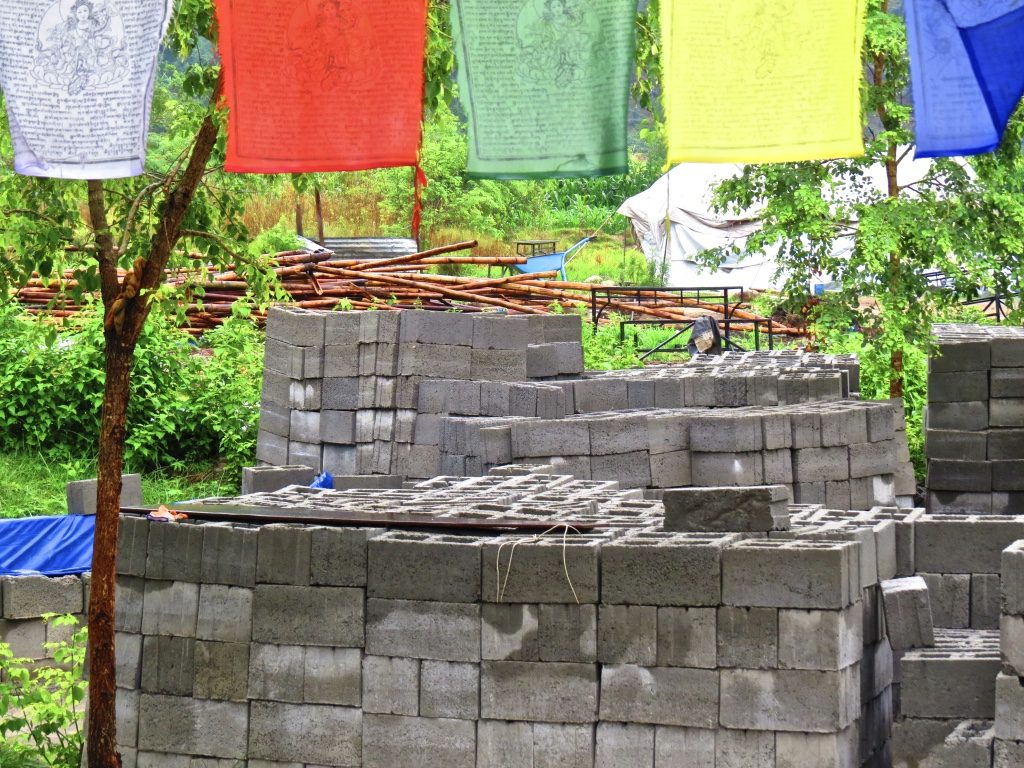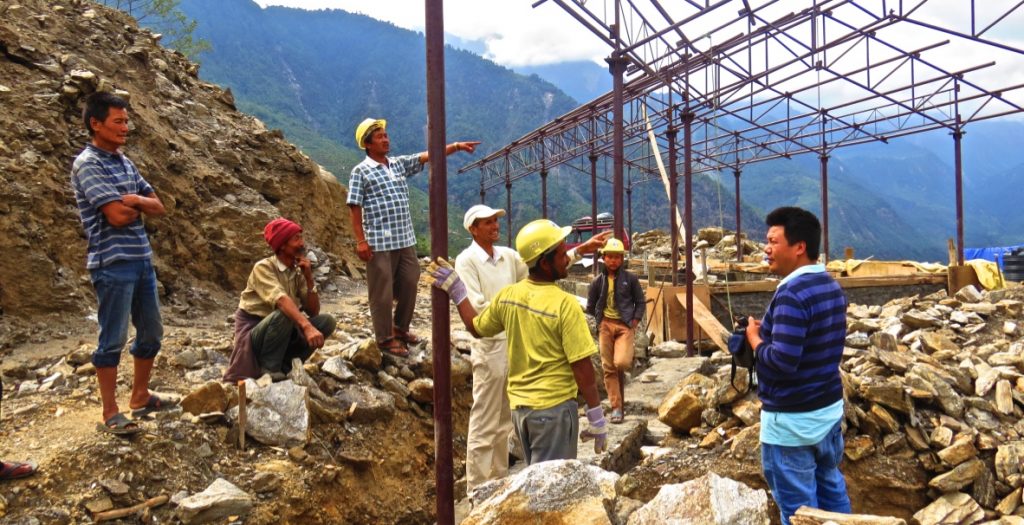Read the next part of Nitish Upadhyaya’s blog from his recent visit to Nepal. If you haven’t read it yet, catch up on Part 1, Part 2 and Part 3.
Back in the office, I continue to learn about how our classrooms are being built. We’re using earthquake resilient bands to tie the walls to the frame to prevent the walls collapsing in the event of seismic shocks.
We’re ensuring our concrete blocks are made to the highest standard by carrying out regular inspections and quality checks. We’re training and employing local masons to do the construction work. By the end of a morning with the reconstruction team, my head is swimming with acronyms, models and construction lingo. But it is heartening to know that our schools, while they may cost a little more and take longer to build, are really built to last for years to come.

We also speak about reporting to our very generous donors, a hallmark of our operations is our commitment to report on how we spend our funds, and provide an assessment of their impact.
During my time with the team, I also help to facilitate a workshop modelled on the Theory of Change, a development staple which helps organisations consider a vision and objectives for growth. Starting with a SWOT analysis, the team take me through their views on how to grow HELP, and how Mondo can support them, along with the challenges they will face. It is fascinating listening to the wealth of ideas that the team put forward, and the skill lies in shaping those into actionable tasks. We’re out of the office, about an hour outside of Kathmandu in the hills for some blue skies thinking.
A point that comes up over and over again is how to ensure that communities are participating and indeed leading relief and education efforts. In my view, this sets us aside from many of the NGOs and INGOs which work in Nepal – we were in the Helambu valley for years before the earthquakes, and we will be there for years to come. This is a long-term project and every step involves close collaboration with the community and understanding their needs. Bottom up development is the only way to make progress sustainable and I must admit that I am a tad worried that other organisations may create dependence situations before they pull out and move to the next disaster.
After a gruelling day thinking about the future of HELP, and how to ensure local participation and sustainability, we’re all glad to be relaxing over beers and chai. The future is very bright.
If you’ve enjoyed this post, check out the next chapter!




Comments are closed.